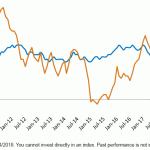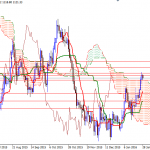Shares of Micron Technology (MU) are under pressure this morning after Goldman Sachs analyst Mark Delaney downgraded the stock to Neutral as he sees weaker fundamentals for DRAM and NAND ahead. The analyst also lowered his price target for Western Digital (WDC) and Seagate Technology (STX) on similar concerns.
GOLDMAN MOVING TO SIDELINES ON MICRON: In a research noted this morning, Goldman Sachs’ Delaney downgraded Micron to Neutral from Buy and lowered his price target on the shares to $50 from $68. The analyst, who is not making a call on the current quarter, told investors that he sees weaker fundamentals for DRAM and NAND in the fourth quarter of 2018 and the first half of 2019. Delaney said he expects Micron’s gross margin to decline sequentially from the fourth quarter of 2018 through mid-2019, noting that the stock is historically well correlated with the company’s gross margin. His view of margin declines is due to lower memory average selling prices, both from more “challenging” DRAM conditions and also NAND oversupply. Further, Delaney noted that his 2019 earnings per share estimate for Micron is now 31% below consensus expectations. Memory downturns usually last for several quarters and can see an acceleration in price declines, as customers delay procurement to wait for lower prices, the analyst contended. Additionally, Delaney argued that given past downturns for memory were often more severe than investors and companies initially forecast, his downside scenario analysis implies that Micron shares could trade in a range of about $20-$50 depending on the severity. Nonetheless, the analyst acknowledged that Micron’s fourth-quarter results should be solid.

CONTINUED MEMORY WEAKNESS: In a separate note this morning, Goldman Sachs’ Delaney lowered his price target for Neutral-rated Western Digital to $63 from $80 and Sell-rated Seagate Technology to $39 from $44 after updating his DRAM and NAND industry models and outlook. For DRAM, the analyst now expects slight oversupply in 2019, and for NAND he continues to expect oversupply in 2018 and 2019 but to a greater extent than his prior view. Both DRAM and NAND should improve in the second half of 2019, he assumed. The analyst pointed out that industry discussions in September suggest that weaker memory trends have continued, due to both increased bit output as well as decelerating demand. Delaney told investors he continues to believe that the DRAM industry has improved cycle to cycle, and is now assuming a benign downturn after a record-long nine-quarter upturn. The magnitude of price declines in DRAM during the downturn will be more modest than past downturns, he contended but noted that his estimates are still below consensus. Delaney highlighted that investors “need to remain cognizant of the fact that memory downturns have historically often been worse than initially expected by companies or analysts”.














Leave A Comment